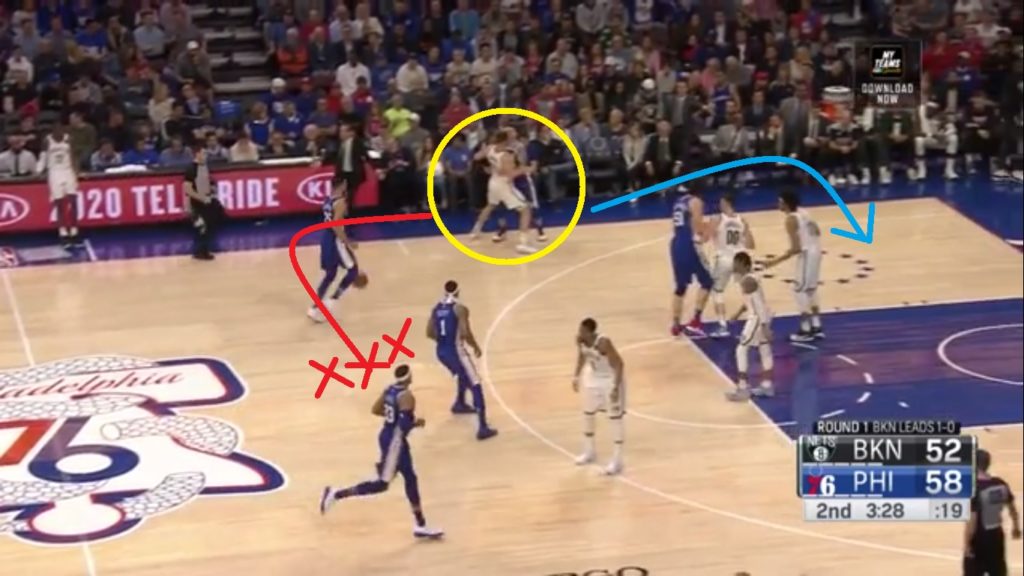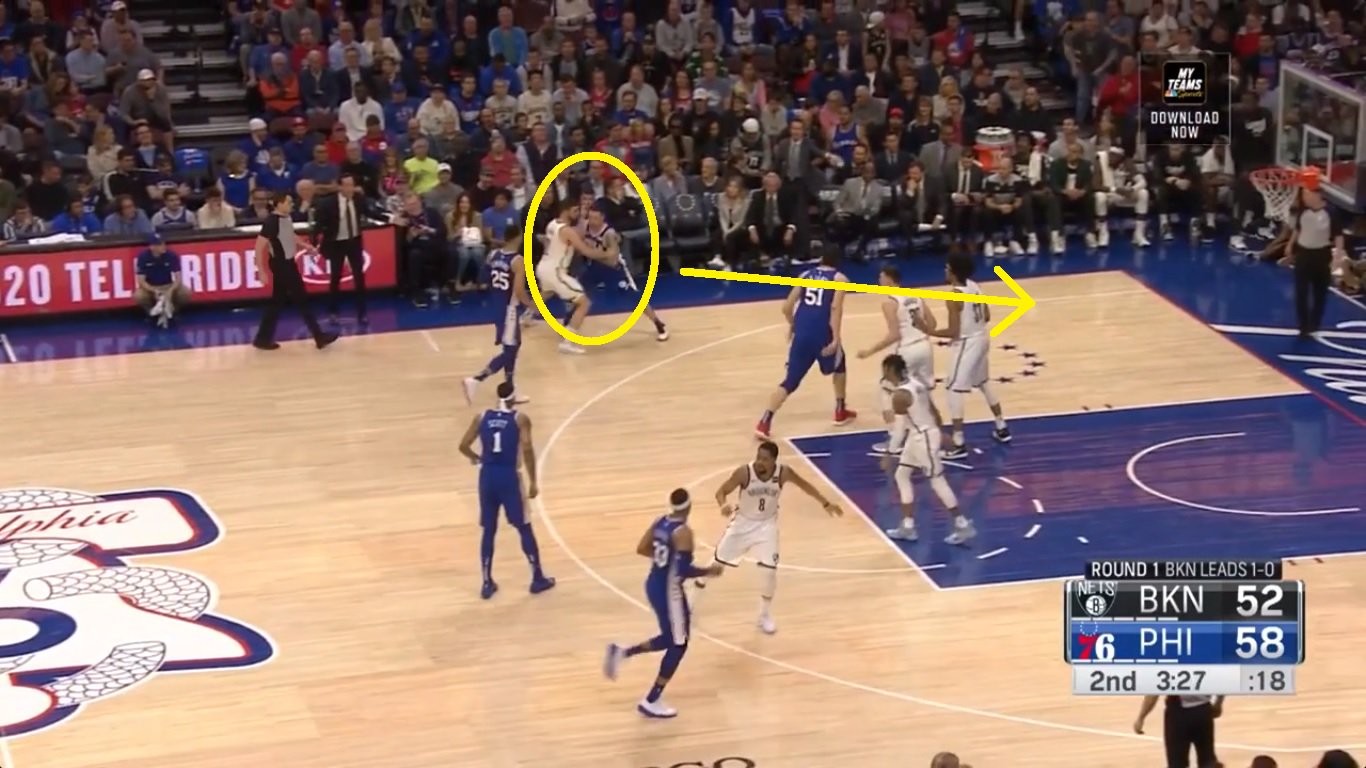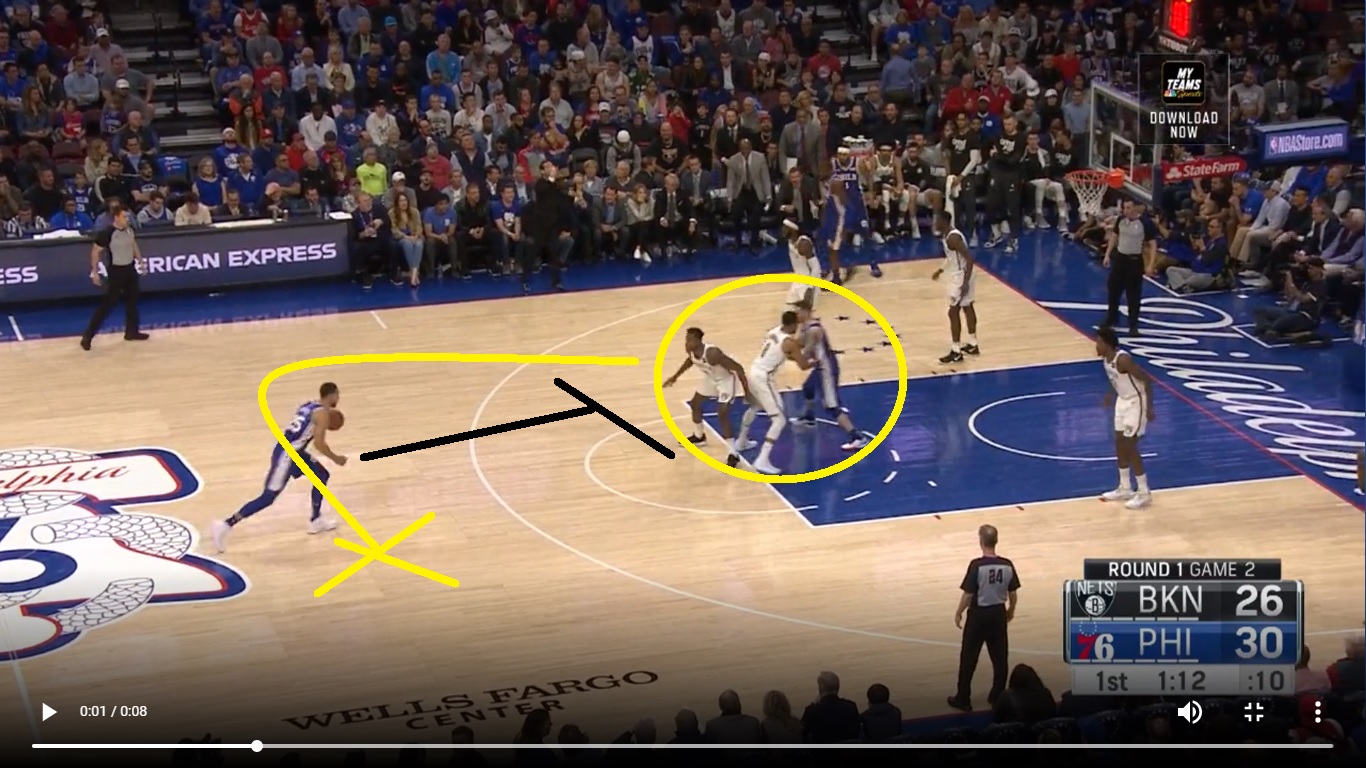Ad Disclosure
JJ Redick and the Top-Lock: On Brooklyn’s Defense and Sixers Solutions

Game three.
Tonight.
8 p.m. on TNT and NBC Sports Philadelphia.
I wrote a bunch of stuff about Chris Sheridan yesterday (and he provided us with a follow up, so we’ll get to that later), but let’s actually start your Thursday with some basketball talk.
JJ Redick went for 17 points on 7-12 shooting in 24 minutes of game two play, a huge improvement over the five-points he mustered in game one before fouling out.
We mentioned the other day that Brooklyn is using a defensive technique called “top-locking” against him, which is when his defender (typically Joe Harris), puts himself between JJ and the ball handler. When you defend in this way, you deny JJ the ball and deny him the dribble hand-off that he’s very good at executing:
That’s a top lock. Harris will sit himself in front of Redick and invite the backdoor cut instead of allowing him to wrap around Ben Simmons to the high arc.
Philly struggled to get JJ going in game one, but they were better in game two, and I asked Brett Brown Wednesday if the coaching staff was satisfied with how his team navigated this tactical wrinkle, after the jump:
“Yeah, we were. We spent a lot of time drilling at it. We spent a lot of time talking about it. I think the combination of some sort of strategy stuff, schematic stuff, draped under the vehement approach that JJ had, that this isn’t gonna stop me. I thought that JJ’s aggressive approach (was something where) where he just didn’t accept the top lock. He just didn’t accept it. Now there were pieces behind it that I hope we helped him with. But in general I thought JJ’s mentality in dealing with that was completely different than game one.”
A generic answer, sure. Brett doesn’t want to go into too much detail about tactical specifics, but he does say that they spent a lot of time going over this concept.
And he’s right when he talks about the macro level idea of aggression, that Redick simply did more to get himself open and work his defender instead of being blanketed and ultimately taken out of the game.
One of the easiest ways to counter the top lock is to play backdoor, which they did in that still image I used above. Here’s the actual video of that play:
Looks easy enough, right? Maybe. JJ I think would tell you that he’s more comfortable coming off the screen and hand-off and wrapping around in the other direction.
And when Brett talks about “pieces behind it that I hope we helped him with,” that could mean any number of things, but one that jumps out to me is spacing. For example, if Ben’s defender is going to sag off him and invite him to shoot, you can’t backdoor into that defender.
In the clip above, JJ gets free towards the baseline, but cuts like these won’t work:
That’s great defense from Spencer Dinwiddie in game one. And with Treveon Graham sagging, he’s clogging up that backdoor passing lane.
In game two, they got JJ an easy bucket on a similar play where aggressive Ben took his man to the rack, Harris fell asleep while putting the lock on, and Redick simply waltzed right in for a layup:
Easier, right? You’re not countering JJ into a clogged paint there, because Ben is close enough to the rim to demand the attention of Rodions Kurucs while Joel Embiid is trying to establish post position on Jarrett Allen.
Another way to attack the top lock is just throw an extra body at Joe Harris. You can run him through staggered screens, like on this play….
….or you can start him from lower positions and have him run his man into another Brooklyn Net, which is what they do on Brett Brown’s favored ’12’ pick and roll:
They got a wide open three-pointer on that sequence after Redick ran Dinwiddie into a sagging Graham, then into Ben himself as a second screener.
So keep an eye on that tonight in game three. Look for JJ’s man to sit on top of him. Look for backdoor cuts and counters, look for staggered hand offs, and look for JJ to have to work a little harder to wriggle free and find open looks. If he starts hitting with regularity, Brooklyn might second-guess how they decide to defend him.
Kevin has been writing about Philadelphia sports since 2009. He spent seven years in the CBS 3 sports department and started with the Union during the team's 2010 inaugural season. He went to the academic powerhouses of Boyertown High School and West Virginia University. email - k.kinkead@sportradar.com

